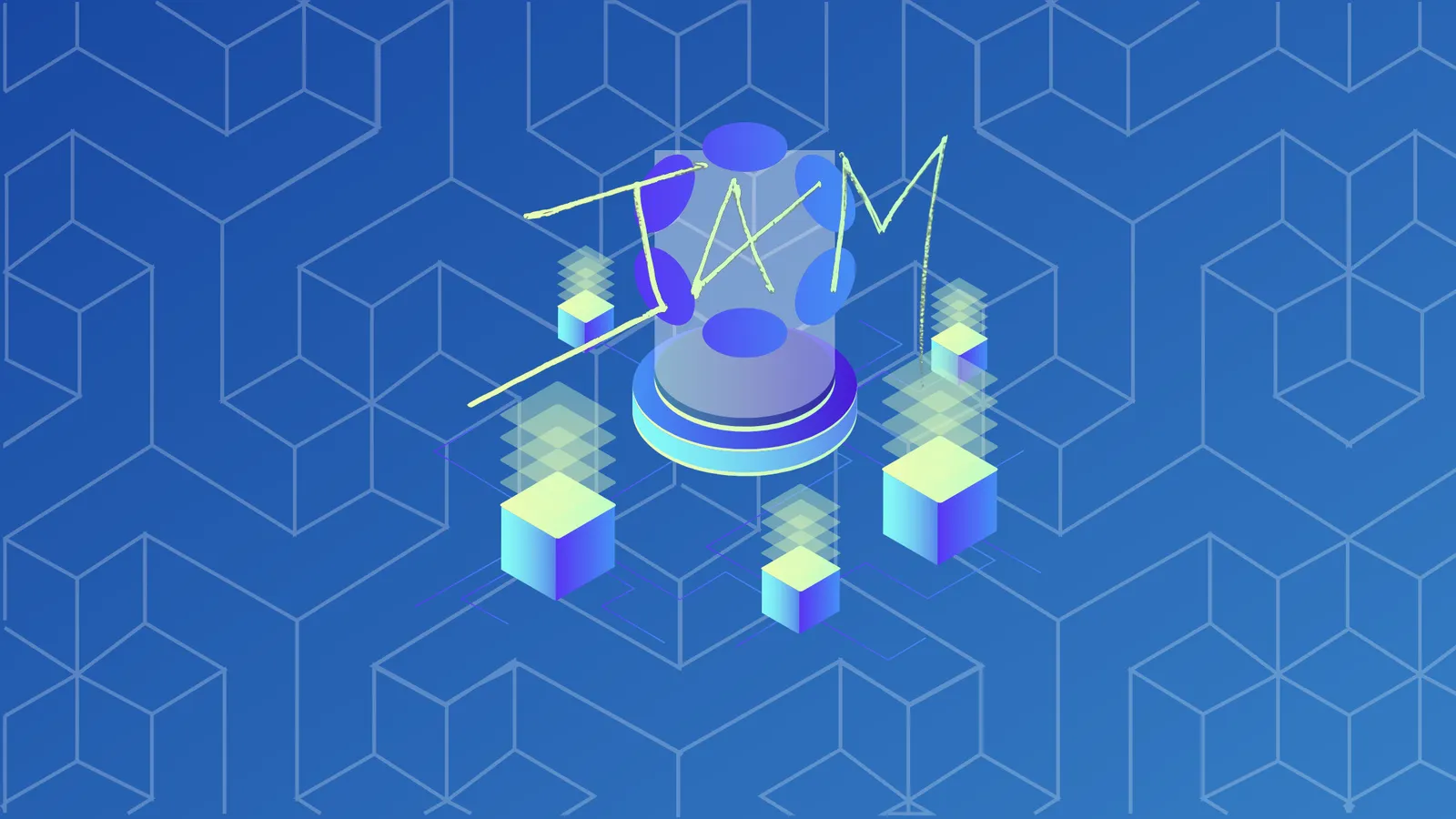Announced in April 2024, the Join Accumulate Machine (JAM) represents the biggest-ever update to Polkadot since the blockchain first became fully operational in 2021. It will bring deep changes to the Relay Chain, the center of the project’s ecosystem, which underpins all its independent parachains.
The JAM upgrade’s proposed technical principles and aims were outlined in the JAM Gray Paper, penned by Polkadot creator Gavin Wood.
Polkadot relies on decentralized leadership to decide the future of the project, and the proposed update was confirmed after a near-unanimous vote of approval from DOT holders in May 2024.
What is JAM?
JAM is an upgrade to the Polkadot multi-chain network that aims to replace its Relay Chain with a “more modular, minimalistic design.”
The Relay Chain is the main chain of the Polkadot network, coordinating the parachains that process transactions side by side on the network. It’s used to check transaction addresses and standardize data so that every system can understand it, enabling chains on the Polkadot network to pool security.
JAM will enable Polkadot to “run generic “services”, smart contract logic which can process the result of execution on cores,” according to Polkadot’s founding organization, the Web3 Foundation.
In a departure from Polkadot’s existing Relay Chain, JAM will be ‘permissionless’ in nature, enabling anyone to build services atop it.
This is a departure from the complex and investment-heavy current system where developers have to bid for their leases at auction, backed by their project’s supporters, who stake their DOT tokens in support of the bid.
The evolution of Polkadot continues with JAM, a candidate design for a future iteration of the Polkadot Relay.
8 years after authoring the Polkadot Whitepaper, @gavofyork's distilled his vision for the future of the network in the Gray Paper.https://t.co/rxMRo8UwGA
— Polkadot (@Polkadot) April 19, 2024
Similar to how people build on Ethereum, developers will be able to build services and smart contracts without bidding for them first. These new services will then have interoperability with the rest of the Polkadot ecosystem and will be able to send tokens and data between each other, just like how current parachains function.
Polkadot’s auction system will be replaced by Agile Coretime, a more economically flexible model that allows Polkadot users to purchase Coretime, the computational resources provided by JAM, in bulk by the month.
Coretime, once purchased, can then be split up and sold into separate parts and resold on secondary markets, which may improve the efficiency of the overall market for computing power. All these Coretime transactions will use DOT, the native token of the Polkadot ecosystem.
In a sense, JAM offers a combination of the parachain-focused functionality of the original version of Polkadot and the smart contract-focused approach of the current version of Ethereum. Gavin Wood has described JAM as a “less opinionated version” of Polkadot, as it doesn't try to push users towards one approach or the other.
Wood thinks the new approach offered by JAM could help deal with some of the issues around scaling that previous blockchains have often faced, as their communities grow beyond a certain point in terms of size, users, and projects.
What is running JAM?
The JAM supercomputer—known as Polkadot Virtual Machine (PVM)—will use RISC-V. This is an open-source and widely adopted processor architecture, used to develop custom processors for a variety of applications and employed by firms including Google, Nvidia, and Alibaba. It will replace the WebAssembly-based framework currently used by Polkadot.
The mainframe is set to be given a test run on a specially built supercomputer called the “Polkadot Palace”, in Lisbon, Portugal. The new supercomputer will have 12,276 cores and 16 TB of RAM and will be able to host the full JAM network in its entirety.
If JAM is successfully implemented, Wood predicts that JAM should be able to achieve data availability of up to 852Mb/s—roughly 42 times the data availability of the vanilla version of Polkadot, prior to the introduction of Asynchronous Backing in May 2024.
The Gray Paper estimates that once JAM is fully up and running, it will be able to achieve a processing capacity of roughly 150 billion gas per second.
How will JAM change the Polkadot ecosystem?
In a May 2024 podcast interview, Polkadot founder Gavin Wood discussed how he thinks having the ability to build services directly on top of the Relay Chain could improve the accessibility of the Polkadot ecosystem.
At present, there is a hard limit of 50 parachains which can be hosted on the Relay Chain. Getting one of these limited slots means going through the auction process, and having financial backers, making the barriers to entry relatively high.
Like the current Relay Chain, the JAM chain itself will have almost no functionality of its own. Functions like governance, staking, and governance will instead be built on these services, with JAM providing the underlying inoperability that enables integration and operability.
JAM could be simply described as a “distributed computer,” which can be used to run almost any task.
Wood used how bees, petals, and flowers function in the natural world as a metaphor to explain how JAM will function. In nature, a flower is surrounded by petals. These petals are like cores, the physical nodes of computers that power the blockchain.
Happy to release the initial Jam spec in the Gray Paper (10 years after my release of the Yellow Paper): A proposal for the future of @Polkadot. https://t.co/thL6CSNGUp
— Gavin Wood (@gavofyork) April 18, 2024
In JAM, the rollups—the services built on JAM—are like bees, and they freely move between the petals. This is a departure from the original version of Polkadot or zk-rollup Ethereum, where the individual petals (or cores) were mapped one-on-one to the parachain they were supporting.
In JAM, these versatile petals are “stateless”, and adapt to different functions, depending on what is required of them.
Every few seconds or so the flowers, which can be thought of as blocks, will create a consensus among all their different petals.
When will JAM launch?
It’s likely that a production-ready version of JAM will take at least 20 to 60 months before it’s ready to deploy, not including the multitude of services that are set to be built on top of it.
Unlike previous updates to Polkadot, JAM will not be introduced via a gradual iterative approach. The migration will happen all at once and once it is done, it's done.
The actual switchover won’t mean anything for people passively holding DOT tokens, or looking to trade it. There won’t be a spin-off currency or new altcoin, such as in the case of Bitcoin Cash in 2017 after the Bitcoin hard fork, or when Ethereum Classic first appeared in 2016.
What will happen to existing parachains?
JAM, though a significant change to the Polkadot network, is not what is known as a hard fork.
This means that the functionality of any of the parachains currently running on Polkadot won’t be impacted; part of the JAM proposal includes a guarantee around hard-coded compatibility.
But although current parachains will continue to function as normal, they will no longer be the only game in town. Parachains will become just one of many products that can be run by the JAM chain.
Polkadot says that we will likely see use cases emerge that will be more suitable for parachains and others more suitable to be built as services.
The Web3 foundation has assured users that parachains will remain “first class citizens” even post-JAM.
How can developers get involved?
The Web3 foundation will be incentivizing developers who work on implementing the JAM protocol.
The JAM Implementer’s Prize offers up to 10 Million DOT—roughly $70 million at current prices—to developers who are able to meet specific performance test criteria.
The prize plans to reward teams that successfully work on diverse implementations, for example using alternative programming languages to Solidity, which the majority of current parachains are built on. These languages include OCaml, Go, and Zig.
The Web3 Foundation is still finalizing the details of the application process, but if you are interested in applying for the prize you can head here for an early sign-up.
Sponsored post by Polkadot Community
Learn More about partnering with Decrypt.






